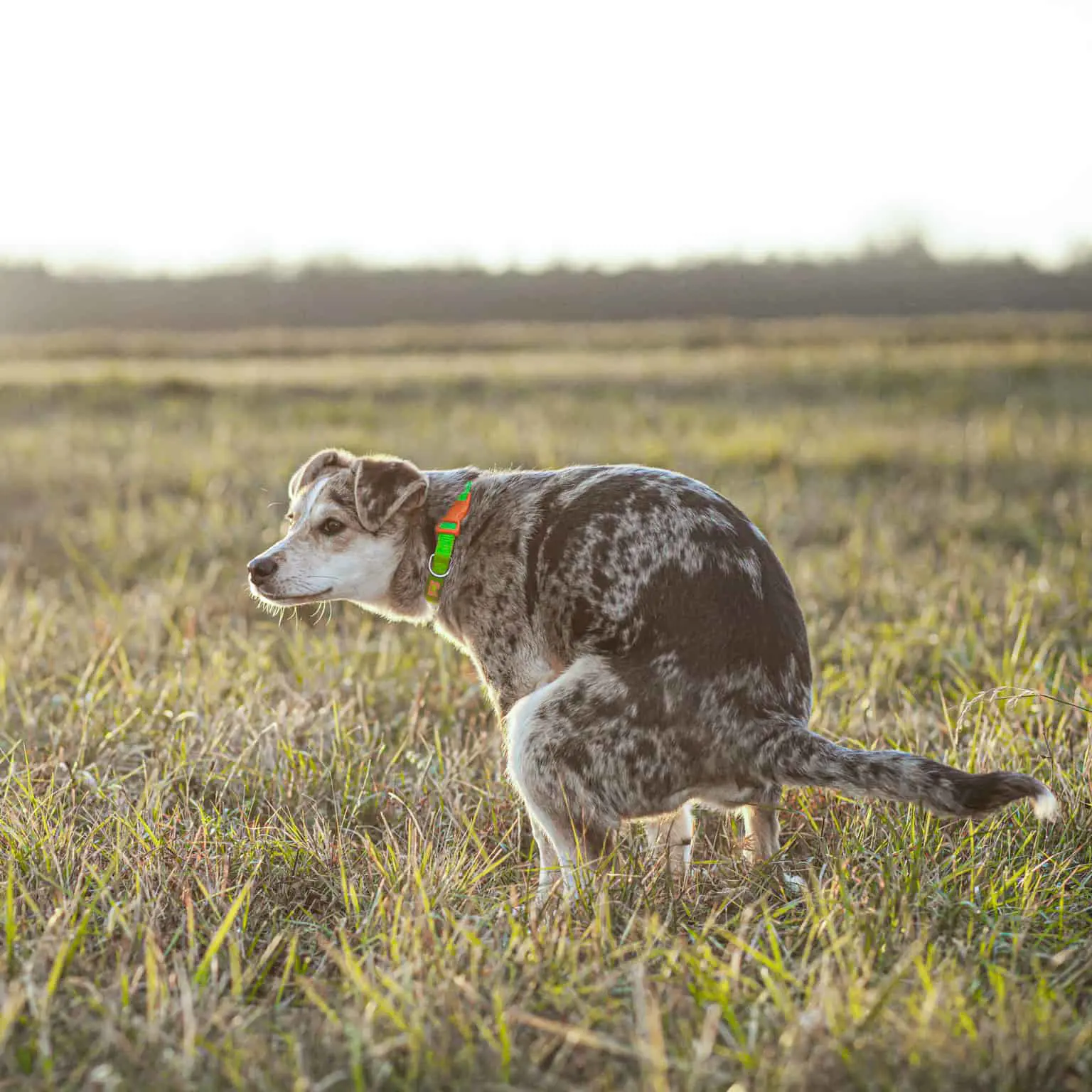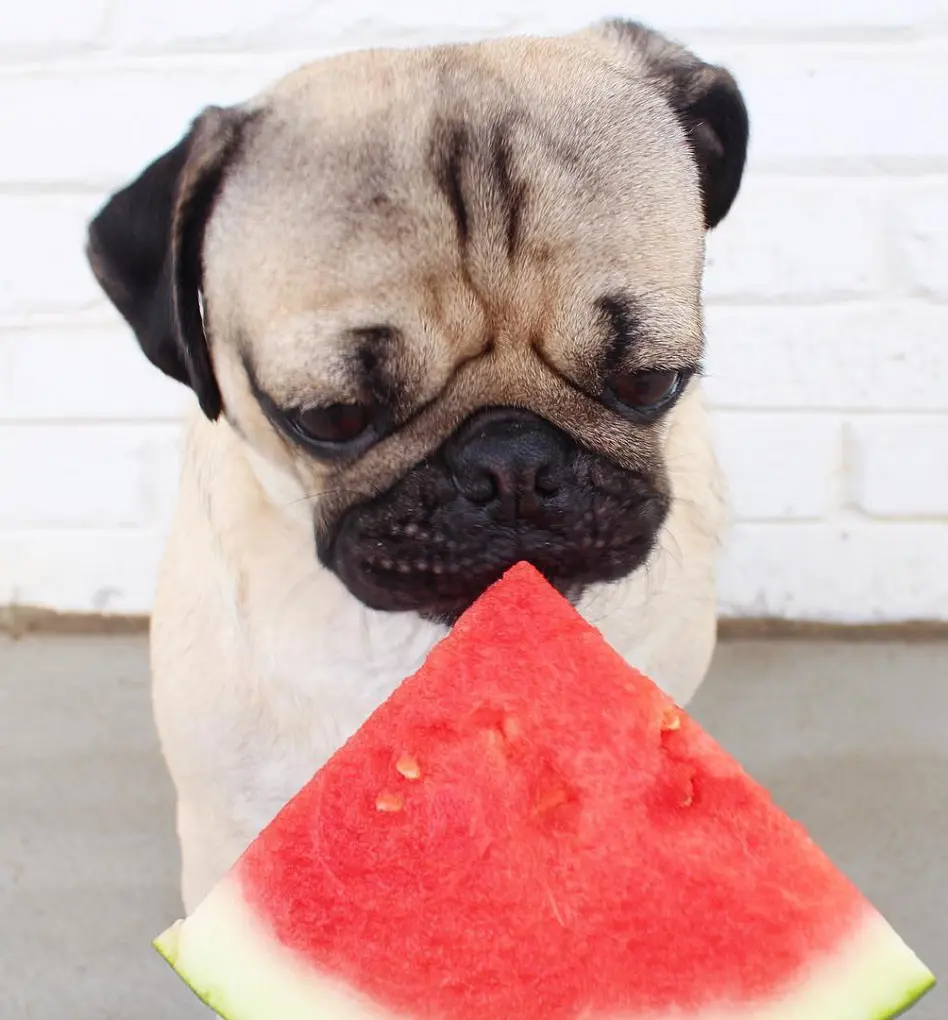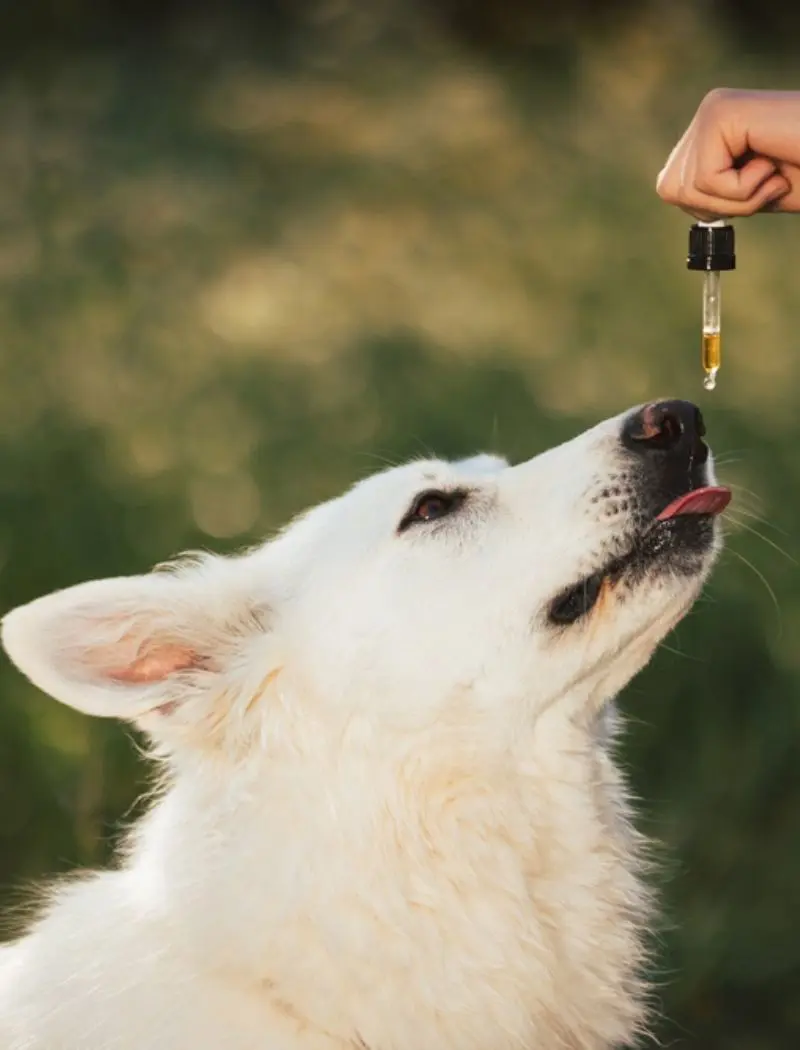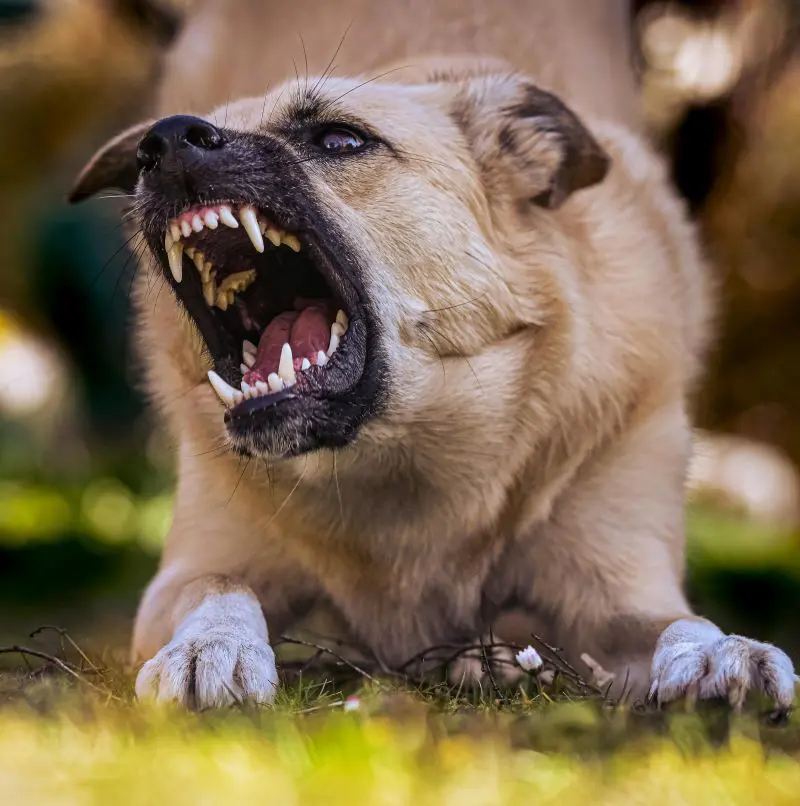Why Is My Dog Foaming At The Mouth?
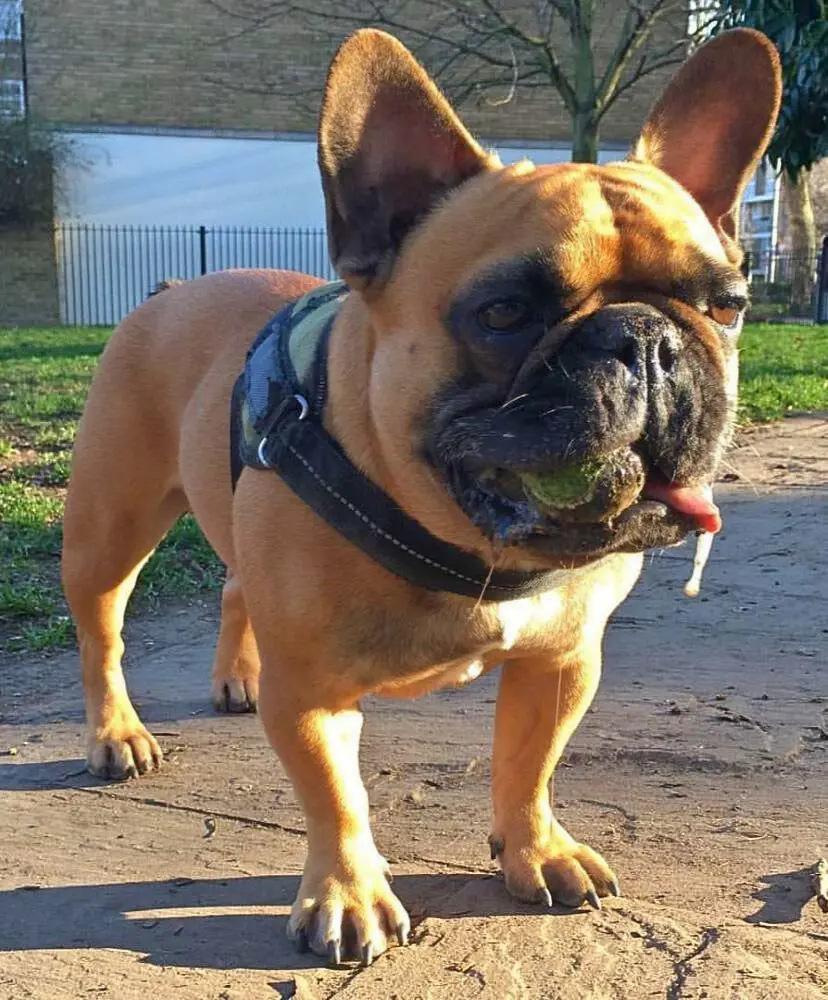
As a pet owner, you should have noticed the tendency of dogs to produce excessive saliva. This is a routine process of the body that aids in digestion and maintains oral health, a process intensified by their tendency to release excess saliva through panting and licking.
Occasionally, this saliva can transform into a foamy substance in the dog's mouth, giving the impression of illness or aggression. However, foaming at the mouth in dogs can stem from various causes, not all of which indicate poor health. Understanding these reasons is crucial for pet owners concerned about their dog's well-being.
1. Exercise
When dogs exercise vigorously, they pant heavily to cool down. This often leads to increased saliva production that mixes with the air and turns foamy, particularly around their mouths.
Excitement or stress from play can further stimulate saliva production. For many dogs, this is a normal response to physical exertion and typically subsides once they calm down and rehydrate. However, if a dog doesn't recover naturally and the foaming continues, it might indicate an underlying health issue such as dehydration, overheating, or even poisoning.
In such cases, it's crucial to stop the exercise immediately, provide water, and move the dog to a cool, shaded area. Monitoring the dog's behavior for other signs of distress, like excessive drooling, lethargy, or vomiting, is essential.
2. Taste Aversion
If your dog is foaming at the mouth, it could be a consequence of the canine eating something with a bad taste. This response is due to their heightened sense of taste and smell, which can trigger excessive saliva production. The bad taste stimulates the dog's salivary glands, causing them to produce more saliva to flush out the offensive substance.
Additionally, certain bitter or spicy flavors can cause an immediate gag reflex, leading to increased drooling and foaming. This reaction is the dog's way of protecting itself from potentially harmful substances and attempting to expel the unpleasant taste from its mouth.
3. Aerated Drooling

Aerated drooling in dogs occurs when saliva mixes with air, creating a frothy, foamy substance around the mouth. This can happen for several reasons, most commonly during periods of heavy panting, such as after vigorous exercise or when the dog is excited or stressed. When dogs pant, their mouths open wide, and the increased airflow can mix with their saliva, leading to this frothy appearance.
Aerated drooling is usually a normal and harmless process in dogs, reflecting their natural responses to physical exertion, excitement, stress, or bad tastes. However, if the foaming persists or is accompanied by other concerning symptoms like lethargy or vomiting, it may be indicative of a health issue, and a veterinarian should be consulted.
4. Exposure to Irritants
Dog foaming at the mouth is one of the possible effects of exposure to food or environmental irritants; the foam serves as a defense mechanism to expel the foreign substance. Common irritants include certain chemicals, plants, cleaning products, and even some foods that taste bitter or spicy.
Consider recent exposures to determine if your dog's foaming is due to an irritant. Has your dog been in contact with household cleaners, certain plants, or unfamiliar foods? Please observe for additional signs of irritation such as pawing at the mouth, drooling, vomiting, or difficulty breathing. These symptoms often accompany exposure to irritants and can help identify the cause.
5. Allergies
Dogs can suffer from a variety of allergies, including food allergies, environmental allergies (such as pollen, mold, and dust mites), and contact allergies (from substances like certain shampoos or cleaning products). Their heightened sensitivity to allergens and frequent exposure to diverse environments make canines prone to these allergies.
When a dog encounters an allergen, their immune system can overreact, leading to symptoms such as itching, redness, swelling, and gastrointestinal issues. In some cases, severe allergic reactions can cause excessive drooling and foaming in the mouth.
For mild allergies, you can apply a home-based solution to help reduce the symptoms. Regular baths with hypoallergenic shampoos can remove allergens from the skin and coat. Likewise, wiping your dog’s paws and body after being outside can reduce exposure to environmental allergens.
6. Stress or Anxiety
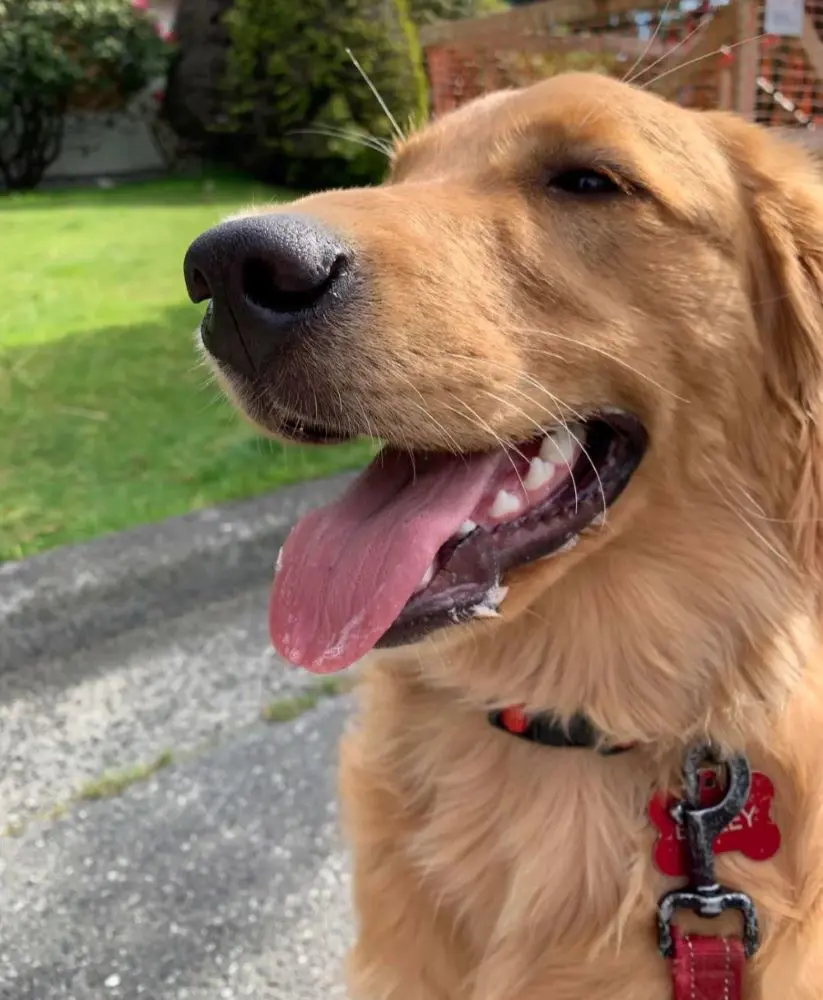
Witnessing a dog foaming at the mouth is often daunting for pet parents. But you should remember that, like humans, even these gentle pooches are susceptible to stress and anxiety. When dogs experience these negative emotions, their bodies produce excess saliva as part of the fight-or-flight response. This increased saliva production, combined with rapid panting, can cause foaming around the mouth. Additionally, anxious behaviors like excessive licking or chewing can further stimulate saliva production, leading to foamy drool.
As a dog owner, you are responsible for creating a stress-free environment for your pet. Regular exercise and mental stimulation through play and training can help reduce anxiety. Similarly, establishing a safe space, such as a quiet room or a comfortable crate, allows your dog to retreat and relax when feeling overwhelmed.
If you see your dog visibly stressed, try using calming aids like pheromone diffusers, anxiety wraps, or soothing music. This can help provide immediate relief and calm them.
7. Heatstroke
Foaming at the mouth in dogs is normal during periods of extreme heat. Heatstroke in dogs occurs when their body temperature rises to dangerous levels due to prolonged exposure to high temperatures.
Foaming is a sign that the dog is in distress and struggling to regulate its body temperature. Other symptoms of heatstroke include heavy panting, drooling, red or pale gums, rapid heart rate, vomiting, and lethargy. If left untreated, heatstroke can lead to severe health complications or even be fatal.
During a heatstroke, immediately move them to a cool, shaded area or an air-conditioned environment. Offer them cool (not ice-cold) water to drink, and apply cool, wet towels to their body, especially around the neck, armpits, and groin. You can also use a fan to help lower their body temperature. Avoid using ice or very cold water, as this can cause blood vessels to constrict and slow down the cooling process.
8. Nausea
When dogs are nauseated, they can produce a froth-like liquid from their mouth. This was done as a response to ease the discomfort. The sensation or urge to vomit often triggers drooling as the dog's body tries to expel the unpleasant sensation from its mouth and stomach.
Nausea in dogs can be caused by various factors, including dietary indiscretion (eating something they shouldn't), gastrointestinal infections, motion sickness, certain medications, or underlying health conditions like kidney or liver disease. Stress and anxiety can also contribute to nausea in some dogs.
In mild cases, withholding food for a few hours and then offering a bland diet (such as boiled chicken and rice) can help settle the stomach. Keep the dog hydrated by providing small amounts of water frequently. If nausea is accompanied by other symptoms like vomiting, diarrhea, or lethargy, consult a veterinarian. They may recommend medications to control nausea and conduct tests to determine the underlying issue.
9. Gastrointestinal Issues
Gastrointestinal issues like gastritis, pancreatitis, intestinal blockages, and inflammatory bowel disease (IBD) are known to cause frothing in canines. These conditions cause nausea and excessive drooling, which can mix with air to create foam.
Gastritis and pancreatitis can result from dietary indiscretions or infections, while intestinal blockages might occur due to ingested foreign objects. IBD is often a chronic condition requiring ongoing management.
Moreover, certain dog breeds are more prone to gastrointestinal issues. Breeds like German Shepherds, Great Danes, and Bulldogs are at higher risk for conditions like IBD and bloat (gastric dilatation-volvulus). Meanwhile, small breeds like Yorkshire Terriers and Miniature Schnauzers can be susceptible to pancreatitis.
Conversely, some breeds tend to have fewer gastrointestinal issues. Breeds like the Greyhound and the Basenji are generally less prone to these problems, although individual health can vary widely within any breed.
10. Motion Sickness
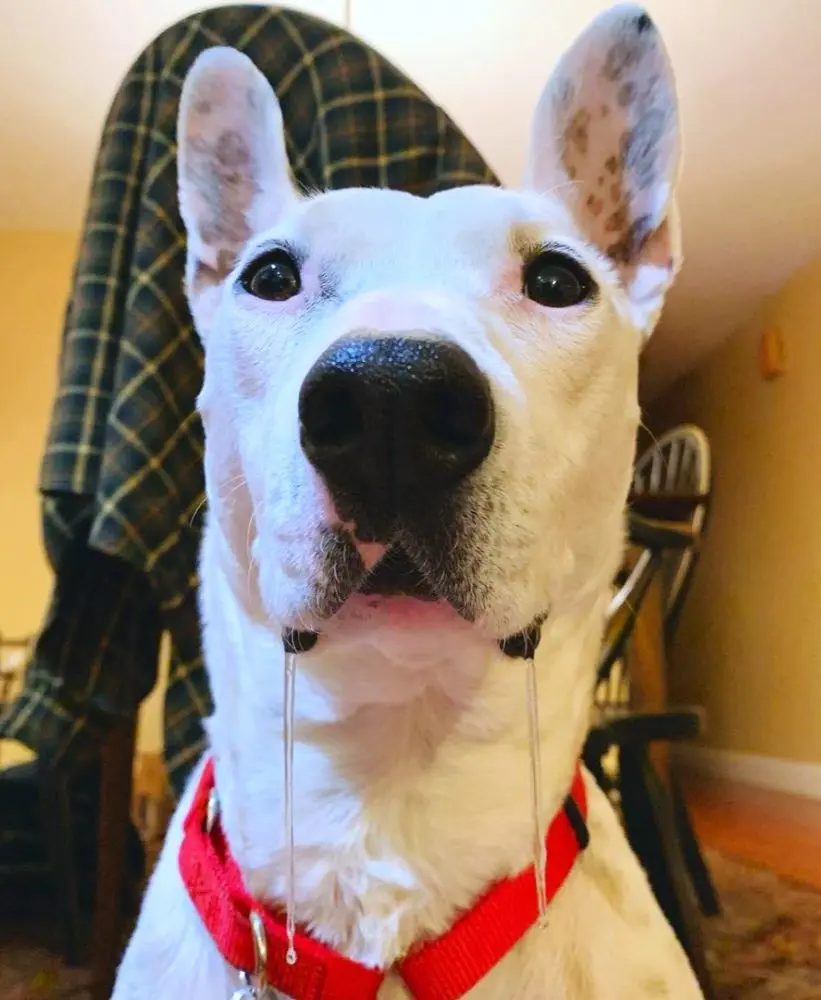
When a dog experiences motion sickness, their inner ear becomes overstimulated by the constant movement of a car or other vehicle. This causes dizziness and discomfort, leading to nausea. As a result, they start foaming at the mouth dog.
Adult dogs can naturally recover from motion sickness, especially as they become more accustomed to car rides. Puppies often outgrow motion sickness as their vestibular system matures. However, for some dogs, motion sickness may persist into adulthood.
To prevent it, gradually acclimate your dog to car rides by taking short trips and slowly increasing the duration. Keep the dog facing forward to reduce visual disorientation and keep the car well-ventilated. Offering ginger treats, which have natural anti-nausea properties, or using vet-prescribed anti-nausea medications can also help.
11. Oral Foreign Object
Your pet canine may start foaming when they have a physical object in their mouth. This is a natural response as the dog's salivary glands become stimulated by the presence of an object, especially if it has an unusual texture or taste.
Certain household items can be dangerous for dogs to hold in their mouths. Items such as small toys, batteries, sharp objects, and toxic plants pose significant risks. Batteries can cause chemical burns, sharp objects can injure the mouth or digestive tract, and toxic plants can lead to poisoning. Plastic bags and certain fabrics can cause choking or intestinal blockages if ingested.
On the other hand, safe items for dogs to hold include sturdy chew toys designed specifically for dogs, such as rubber bones, dental chews, and treat-dispensing toys. These items are designed to withstand chewing and are made from non-toxic materials. Always supervise your dog while they are chewing to make sure they do not accidentally ingest any pieces, and regularly inspect toys for signs of wear and tear.
12. Dental Problems
Dogs are quite prone to dental issues, which can significantly impact their overall health. Common dental issues in canines include periodontal disease, gingivitis, tooth fractures, and tartar buildup. Periodontal disease, caused by the accumulation of plaque and bacteria, can lead to painful inflammation and infection of the gums and supporting structures of the teeth.
Dental problems can cause dogs to produce foam in their mouths due to increased saliva production and discomfort. When a dog experiences oral pain or irritation, their salivary glands produce more saliva to try to soothe the area. This excess saliva, combined with panting or rapid mouth movements, can create a frothy, foamy appearance.
Maintain your dog's dental health by regularly brushing their teeth with canine toothpaste, providing dental chews and toys that help reduce plaque buildup, and providing a balanced diet that promotes oral health. Occasional professional dental cleaning is also crucial to their overall aesthetics.
13. Rabies
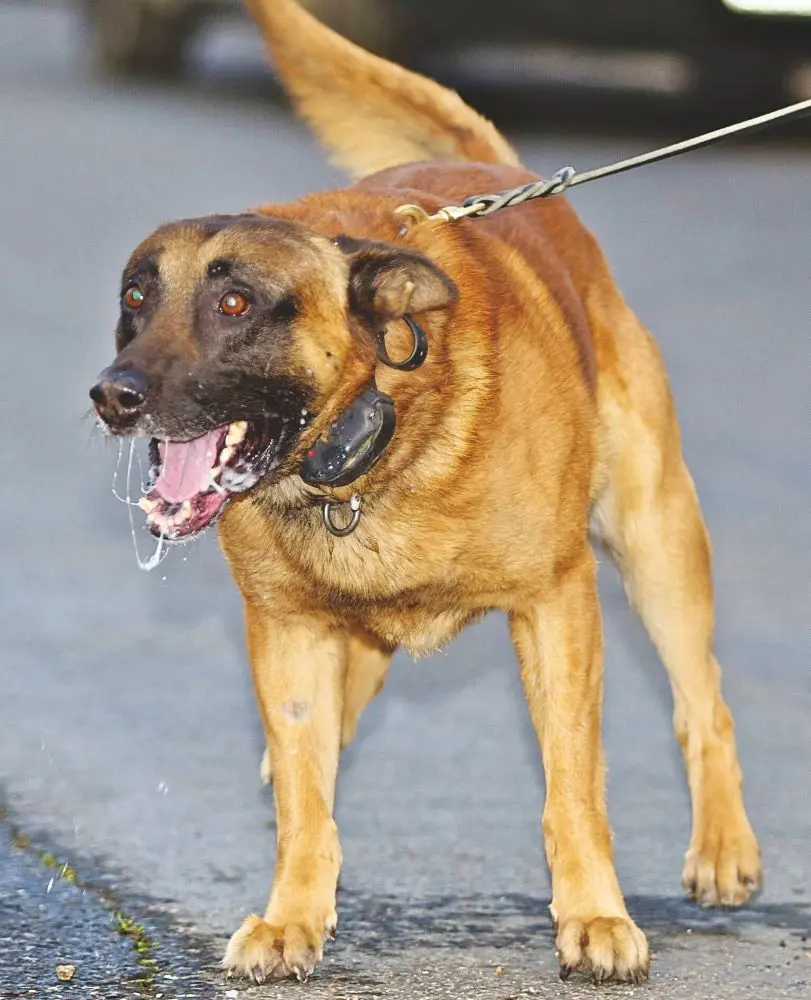
Rabid dogs often exhibit behaviors like foaming at the mouth and growling due to the virus's impact on their nervous system. Rabies cause inflammation of the brain, leading to hyper-salivation (excessive drooling) and difficulty swallowing, which results in foaming. The disease also induces aggression and erratic behavior, making dogs more likely to growl and bite.
Dogs can contract rabies through the bite of an infected animal, as the virus is transmitted via saliva. Common carriers include raccoons, bats, skunks, and foxes. Rabies can also spread if an infected animal's saliva comes into contact with a dog's open wound or mucous membranes.
Unfortunately, there is no treatment for rabies once clinical symptoms appear, and it is almost always fatal. However, rabies is preventable through vaccination. Dogs should receive regular rabies vaccinations as part of their routine veterinary care. If a dog is bitten by a potentially rabid animal, immediate veterinary attention is crucial. Post-exposure prophylaxis (PEP) can be administered if exposure is identified before symptoms develop, potentially preventing the onset of the disease.
14. Salivary Gland Issues
The salivary gland is vital in the overall functioning of a dog's body. It produces saliva, which aids in digestion, lubricates the mouth, and helps control bacteria. Saliva contains enzymes that initiate the breakdown of food, making it easier to digest.
Issues with the salivary glands can significantly affect a dog's health. Common salivary gland issues in dogs include sialocele (a saliva-filled cyst), salivary gland infection, and salivary gland tumors. These conditions can lead to pain, swelling, and excessive saliva production.
Excessive saliva production often combines with air as the dog pants or breathes heavily, resulting in foaming at the mouth. Sialocele, for instance, causes an accumulation of saliva in the tissues, leading to swelling and discomfort. This can make the dog drool excessively. Infections and tumors can also disrupt normal saliva flow and cause similar symptoms.
15. Infections
Foaming in the mouth in dogs can often be attributed to various infections, which may be localized or systemic. Infections affecting the mouth, throat, and respiratory system are common culprits.
Oral infections, such as gingivitis or periodontal disease, can lead to excessive drooling as the body attempts to clear the infection, resulting in foam. Similarly, abscesses or infected wounds in the mouth can cause irritation and increased saliva production.
Recent posts
Dogs
Dog Poop Color Chart: How To Know Your Dog's Poo is Healthy
As strange as it might seem, your dog’s poop can reveal a lot about their overall health. By paying attention to the color, consistency, and frequency of your dog's stool, you can catch early warning signs of a wide range of health issues&mdash...
Is Watermelon Good For Dogs?
Watermelon can be a nutritious treat for dogs when given in moderation. Over 90% of the flesh is made up of water, which helps with hydration, especially in hot conditions. It also contains fiber for a healthy digestive system and important vitamins ...
Is Peppermint Oil Safe For Dogs? Benefits and Safety Tips
Essential oils are becoming famous among pet parents as they can be infused easily through the surface or by sniffing them in. Peppermint is an essential oil that has a good odor and various health advantages. The safety of this oil is a topic of con...
Dog Sleeping Positions And Their Meanings
The diverse sleeping dog positions of our furry companions unveil a fascinating tapestry of behaviors and emotions in the canine realm. From the classic Curler to the enigmatic Superman, each posture conveys a unique message about a dog's well-being ...
Why Is Your Dog Showing Aggression And How To Stop It
Dog aggression can be scary, but understanding the cause is the first step to solving it. Common reasons include fear, pain, or feeling threatened. It could also be due to anxiety from new individuals or canine friends, or even guarding food o...
The Lifespan of Dogs: What Every Pet Owner Should Know
Dogs are beloved companions, providing comfort, security, and joy to millions of households worldwide. One of the most common questions among dog owners and enthusiasts is, "How long do dogs live?" Understanding the lifespan of a dog involves conside...
